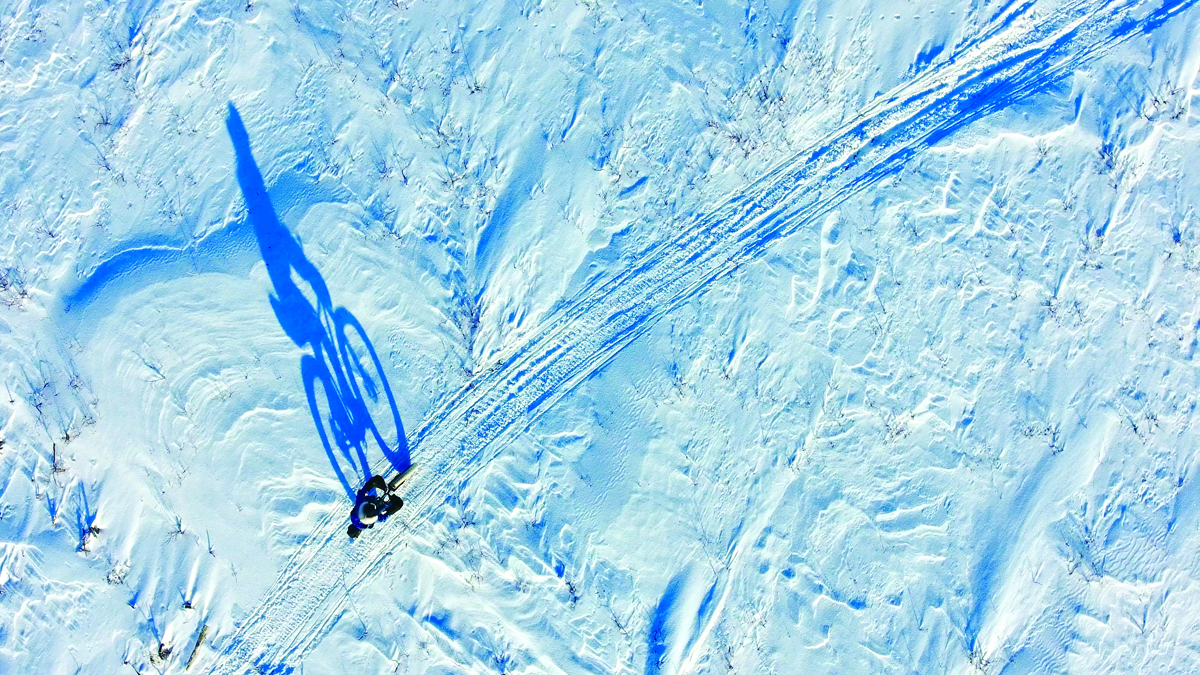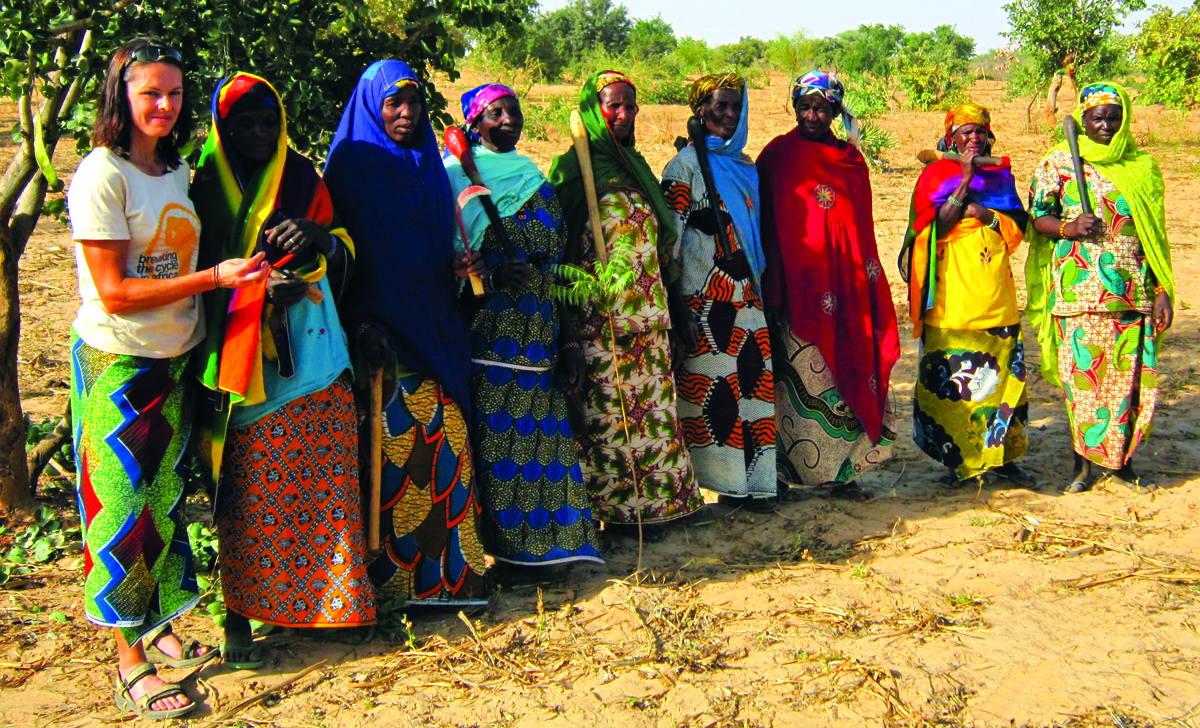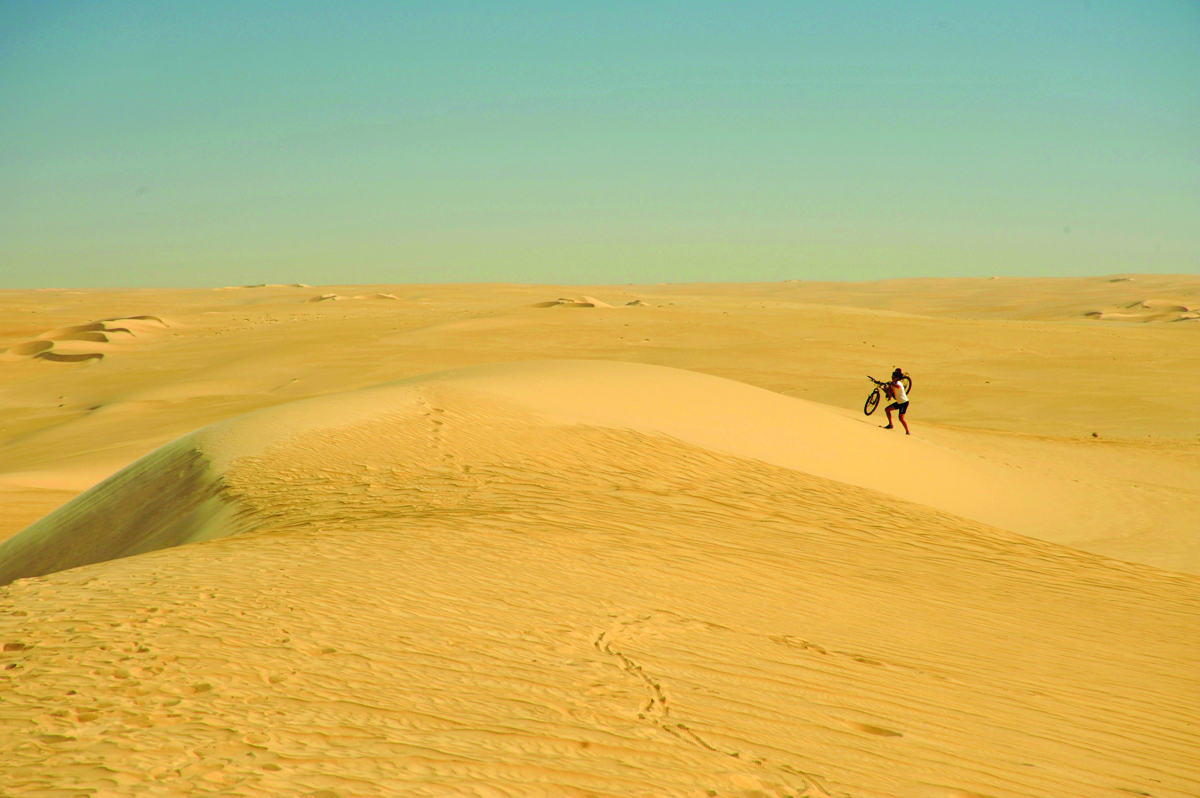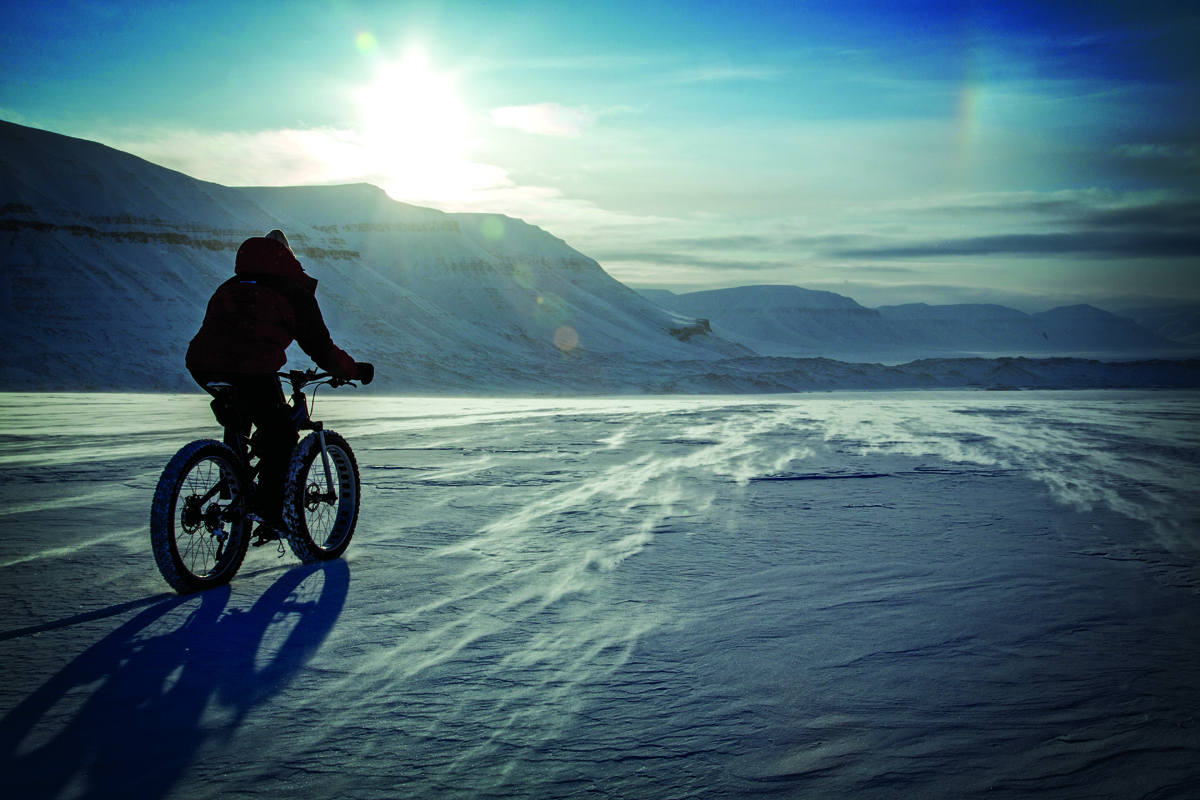Setting off from the city of Maradi in Niger, the Harmattan seasonal trade winds that whip sand straight off the Sahara Desert returned with a vengeance, like a malevolent entity sensing my every move.
As well, I had managed to pick up a cold during the freezing Saharan nights. Believing it insignificant, I ignored my unease and continued to push hard – I wanted to catch up some time on the paved road.
Grinding into the wind and dust sent my system over the edge. My body struggled internally to combat the resultant chest infection and, externally, reduced my ability to resist the force of the Harmattan.






These conspiring circumstances tested my mind. I had completed almost three months of my Breaking the Cycle in Africa expedition and just over 5000 kilometres but, if all went to plan, I still had at least seven months and 17,000 kilometres to go. I’d had three gastros and two chest infections in that time. Dwelling on these overwhelming thoughts did not help as I crawled along at 12 kilometres an hour.
Retaining the most aerodynamic position – doubled over with my back flat and head down – for extended periods of time was wearing. During the worst of the sand blasting, in a crude attempt to filter the grit, I covered my nose and mouth with my neck scarf. But I couldn’t keep the scarf in position for long because I couldn't breathe: my whole air tract was gummed-up and the dust exacerbated the situation.
The people of the Sahel region call December and January the ‘nose-picking season’ because the Harmattan causes endless respiratory problems. I could see why. This stage may have been mental torment but there was never any intention of giving up. I reminded myself of all the effort that had gone into reaching this far, of all the people who had invested time and money into the venture and the many children and adults who were following the journey, learning more about Africa. That was motivation enough for me.
I was still looking forward to seeing how this story would unravel and could not wait to find out what lay ahead. I may have felt low, but in reality there was nothing stopping me from turning the pedals. I just needed to accept this particular set of circumstances – my health, the weather and the road – and work with them, adapt and endure.
Maintaining a positive attitude is certainly essential to get through the inevitable tough times that have occurred during every major expedition I've done, but, delving deeper than that, my resolve is drawn from a total belief in the vision and purposes of each venture.
MY MOTIVATION
When planning my first major expedition across Russia I met polar explorer Robert Swan, the first person to have walked to both the North and South poles. It was Robert who inspired and taught me that there was far more value to what I was doing than simply riding a bike. He gave me the confidence to raise the bar.
The purpose of the 1993 Trans-Siberian Cycle Expedition (13,400km from St Petersburg to Vladivostok) was to aid the 800,000 children affected by the Chernobyl disaster. Since then I have always tried to make a difference to the people met along the way, the places travelled through and, as well, I strive to promote understanding through my education programmes.
Each expedition has become a part of who I am and experiences from all these journeys are thrown into the mix from which new dreams and visions are born. Crossing Europe and Russia, 25,000km through Australia, 22,000km across Africa and the current series of preparatory expeditions, leading towards a planned crossing of the Antarctic continent, are part of a progression, each designed and performed on the back of previous expeditions.
Every challenging journey serves to open my mind a little more, to see the world with ‘new eyes’ and to understand what is realistically possible. With such a wealth of experiences under my belt, I feel it a duty to continue to explore; to find my full potential and share stories that, hopefully, will inspire and encourage others to seek and make the most of opportunities relative to their own strengths, abilities and passions (not necessarily cycling).
Of course, being able to dream up adventures and expeditions that others may struggle to imagine accounts for nothing unless they are brought to fruition. And the transition from dream to reality – plucking up the courage to announce the project and then launching into the organisational phase – is, in my experience, the biggest challenge of all.
MAKING AN EXPEDITION HAPPEN
It doesn’t matter how good one is at performing the physical feat. If you can’t source the funding, organise the logistics or find appropriate committed and like-minded teammates to reach the start line with, you are, in a word, goosed.
As my projects have become more ambitious and costly, the organisational phase becomes concurrently more complex and lengthy. For instance, the Russian expedition took four months to organise and cost about $17K, Australia took eight months and cost around $50K, Africa took 18 months to organise and cost around $200K and my new project, Breaking the Cycle South Pole, has so far taken five years to prepare for and organise and we are still in the process of securing the $650K budget for a supported cycle journey across the Antarctic continent.
It all boils down to creating a vision that is marketable and the capability to sell both the proposal and my personal brand to well-aligned sponsors, partners, teammates and the various forms of media.
Breaking the Cycle South Pole has, without doubt, been the most challenging project to make happen. As with all major expeditions, it began as an idea that fluttered about my mind for several years before slowly taking shape.
I have always been intrigued by Antarctica and stories of the feats of polar explorers from the heroic age (Amundsen, Shackleton, Mawson, Scott) and the modern age; my mentor, Robert Swan, being one of them.
But growing up, I never thought it could be possible to cycle across the highest, driest, windiest continent on Earth. With so many experiences behind me, and particularly after traversing the Canning Stock Route on a regular mountain bike (four deserts and almost a thousand sand dunes), I started to entertain the idea of tackling Antarctica.
Cycling on soft, irregular sandy surfaces is similar to cycling on snow, and with the advent of fatbikes, where the wide tyres increase the flotation over the soft and unpredictable surfaces, it was time to determine whether this was a realistic dream.
Several people had attempted to cycle to the South Pole, but by early 2013, no one had succeeded. In my search to develop the best bike for the job, I tracked down Steve Christini in Philadelphia, USA.
In the late 1990s Steve had engineered an all-wheel drive mountain bike using an internal shaft drive and spiral gears on the front and rear hubs, the only system that appeared robust enough to endure polar conditions. At that time, Steve’s company had moved to producing AWD motorcycles, however I persuaded him to try his hand at building an AWD fatbike for my Antarctic challenge. Although we have never met, Steve has remained a key, reliable sponsor, continuing to refine his invention over the last half a decade.
With no experience of dealing with the extreme cold, I sought the expertise of Australia’s most experienced polar explorer and guide, Eric Phillips. Eric also loved the project.
Next I was able to lock in whom I thought was the best filmmaker for this project, Swiss documentary filmmaker, Claudio von Planta and British remote locations photographer Phil Coates.
The four of us travelled to Svalbard, Norway to test the first Christini AWB fat-bike prototype in polar conditions. First we needed co determine whether my Antarctic challenge was possible.
In order to attract the level of funding required, we had to convince potential sponsors that we had an exciting, realistic, marketable quest and a team that could pull it off while producing quality content. But even with the A-team and combining all of my experience and energy, finding this level of financial support has remained the biggest challenge of my career as an adventurer.
Since 2013, I have performed three more polar training expeditions in Northeast Greenland, Arctic Canada and Iceland, each time testing a new improved Christini AWD fat-bike, refining clothing systems and gaining valuable experience in dealing with the extreme cold.
RIDING FOR A CAUSE
While the physical mission is to make the first bicycle crossing of the Antarctic continent via the South Pole, of equal motivation and requiring just as much effort to develop, are the outreach projects.
Originally I decided to call the expedition Breaking the Cycle South Pole because I wanted to use it as a platform to act upon several of the poverty-related issues that I learned so much about in Africa.
Although my journey to reach the start point of the expedition may have taken much longer than I had envisaged, the extra time has enabled me to develop Breaking the Cycle: Education, a new educational platform and curriculum that aims to help prepare future leaders to make informed decisions to create a better world.
In addition, I’ve partnered with Y Generation Against Poverty to help improve access to education in Kenya and South Africa. These outreach projects will certainly serve to motivate me during the most difficult times on the Antarctic crossing.
Integral with the education programme is a series of smaller, challenging expeditions, that are helping to prepare me mentally and physically for Antarctica. These preparatory expeditions involve cycling in polar conditions, through sand and at altitude on six continents before I begin my Antarctic crossing, now planned for late November 2019.
Alongside these preparatory expeditions, including the Baja Divide in Mexico, polar training in Iceland, cycling along the sandy bed of the Finke River in Central Australia, the Indian Himalaya, the Andes and the Altiplano in South America and the Skeleton Coast in Namibia, I am making educational contributions on each continent that will eventually develop into a global network and a legacy of my work.
Breaking the Cycle, the brand that has evolved out of my vast range of experiences, strengths and passions, is very much about taking action and inspiring others – leaders and changemakers, of this generation and the next – to explore to find their passion and to aim high to achieve their full potential.
In particular, it is unacceptable that 130 million girls and women still don’t have the circumstances to be the best they can be because they don’t have access to an education. To provide them with opportunities for a quality education will surely go a long way to ending extreme poverty and the world will be vastly better off from the brimming potential that will undoubtedly be unleashed.





